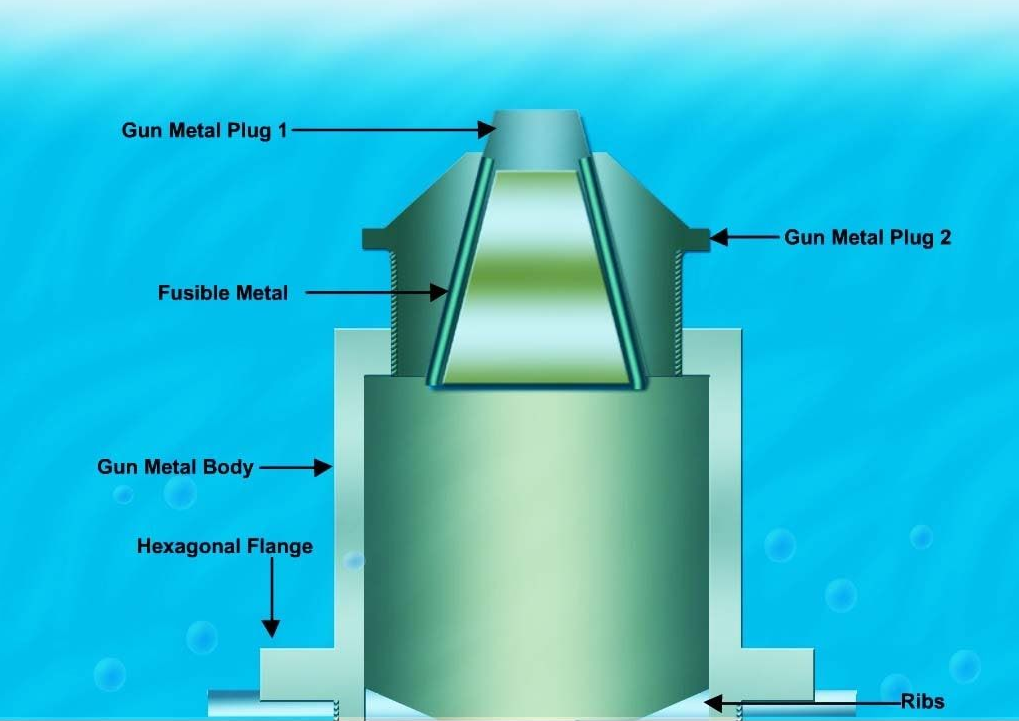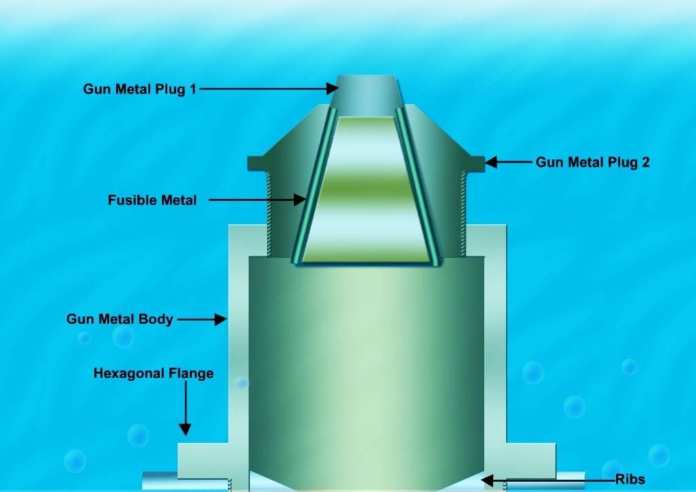
- A fusible plug is a threaded metal plug, usually of bronze, brass or gunmetal, with a tapered hole drilled completely through its length.
- This hole is sealed with a metal of low melting point, usually lead or tin.
- It is screwed into the crown sheet (the top plate) of a steam engine firebox, typically extending about an inch into the water space above.
- Its purpose is to act as a last-resort safety device in the event of the water level falling dangerously low.
- when the top of the plug is out of the water it overheats, the lead core melts away and the resulting noisy release of steam into the firebox serves to warn the operators of the danger before the top of the firebox itself runs completely dry.
- The temperature of the flue gases in a steam engine firebox can reach 1000 °F (550 °C), at which temperature copper, from which historically most fireboxes were made, softens to a state which can no longer sustain the boiler pressure and a severe explosion will result if water is not put into the boiler quickly and the fire thrown out.
- The hole is too small to have any great effect in reducing the steam pressure and, as little or no water passes through, it is not expected to have any great impact in quenching the fire.





